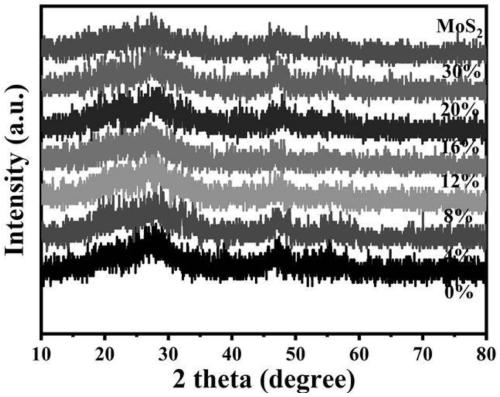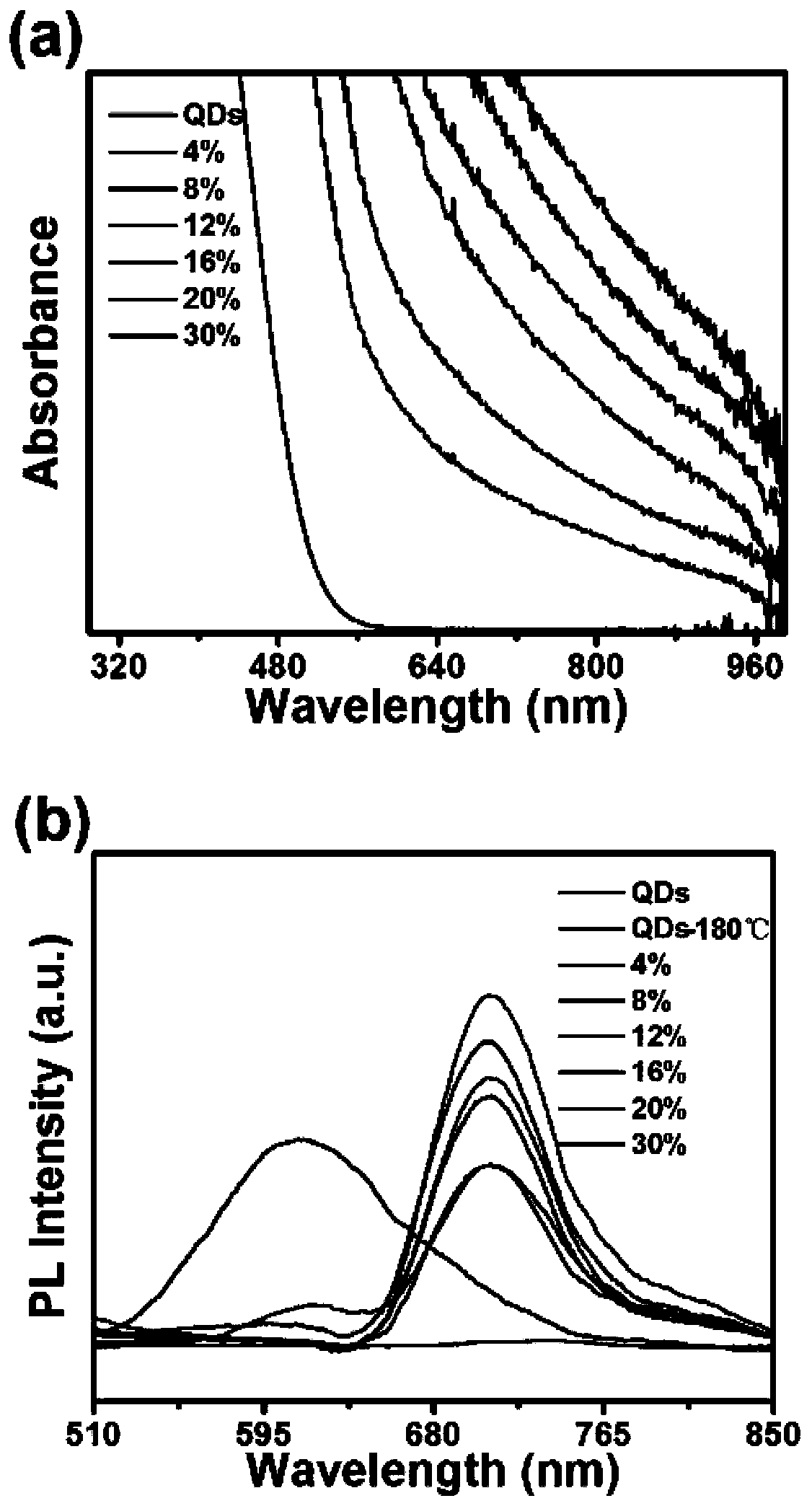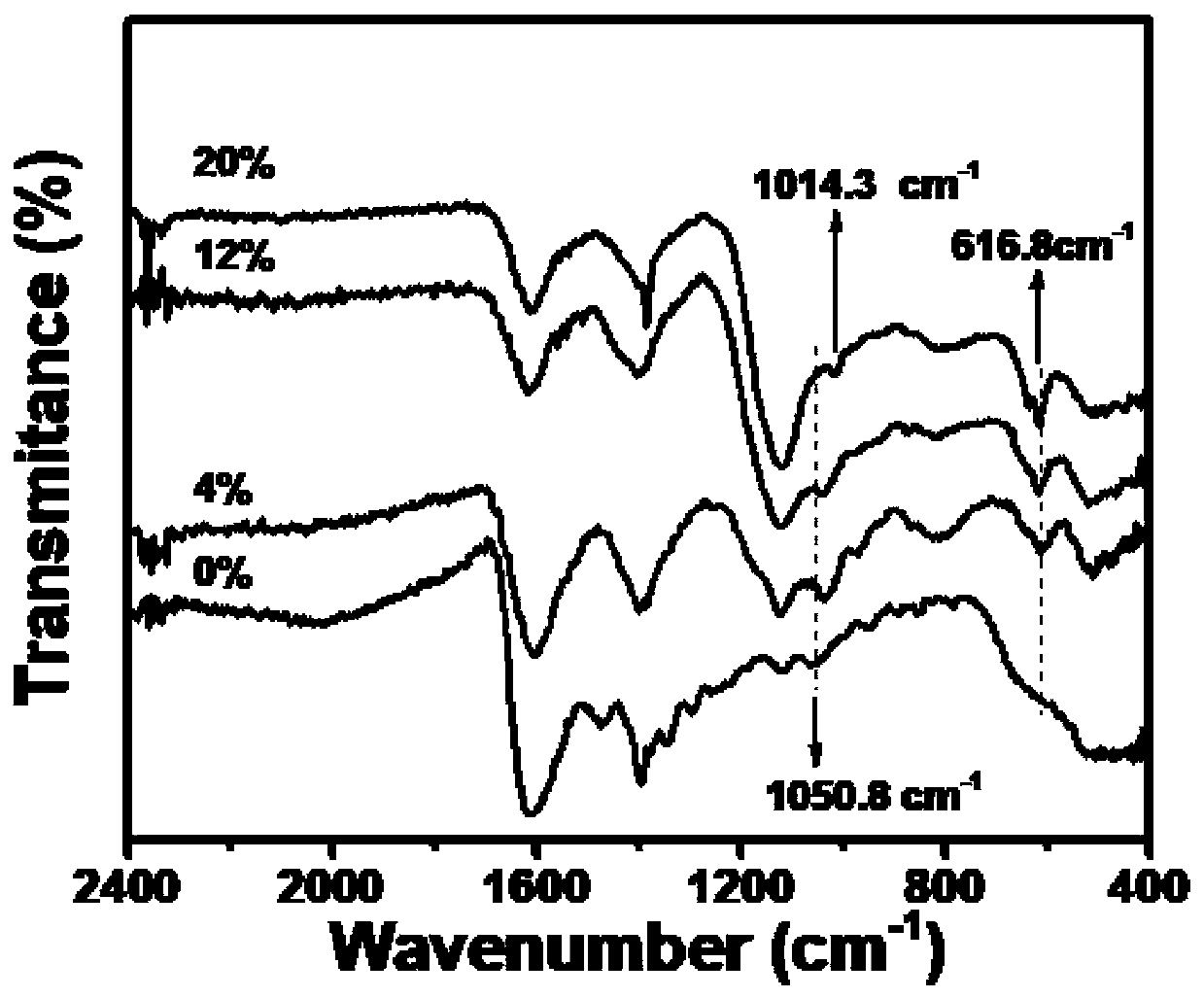0D/2D composite photocatalysis material and preparation method and application thereof
A technology of composite photocatalysis and ammonium molybdate tetrahydrate, which is applied in catalyst activation/preparation, chemical instruments and methods, physical/chemical process catalysts, etc., can solve problems such as lack of hydrogen production activity, and achieve excellent photocatalytic activity and cost. Inexpensive and easy to mass-produce
- Summary
- Abstract
- Description
- Claims
- Application Information
AI Technical Summary
Problems solved by technology
Method used
Image
Examples
Embodiment 12
[0021] Example 1 2D MoS 2 Preparation of Modified Cu-In-Zn-S Quantum Dot Composite Photocatalyst
[0022] Cu-In-Zn-S quantum dots are prepared by weighing copper acetate (0.0508g), zinc acetate (0.278g) and indium nitrate (0.9734g) and dissolving them in 8.25mL deionized water, and obtaining a colorless aqueous solution by ultrasonic . After adding 3mL of L-cysteine (0.9074g) solution as a protective agent, 1mol L -1 Sodium hydroxide was used to adjust the pH of the mixed solution to be 8.5, and then 9.75 mL of 0.366 g of thioacetamide was added to the mixed solution. The mixed solution was ultrasonically mixed, transferred to a stainless steel autoclave (polytetrafluoroethylene lined), placed in an oven at 110°C, and kept for 4 hours. The obtained quantum dots were washed three times with deionized water / ethanol precipitation / centrifugation cycles, and stored in deionized water.
[0023] Cu-In-Zn-S / MoS 2 The preparation method of the photocatalyst is: weigh a certain a...
Embodiment 2
[0024] Example 2 Cu-In-Zn-S / MoS 2 Characterization analysis of photocatalyst
[0025] figure 1 , it can be seen from the figure that although with the MoS 2 The change of the amount is still mainly the peak of Cu-In-Zn-S nanocrystals and no other miscellaneous peaks can be observed. MoS 2 The introduction of did not cause changes in the position and intensity of diffraction peaks, and there was no obvious MoS 2 peaks and other impurity peaks, probably due to MoS 2 Low content or weak diffraction peaks do not significantly affect the crystal structure of Cu-In-Zn-S quantum dots.
[0026] figure 2 , it can be seen from the figure that with the MoS 2 An increase in the amount will lead to a red shift in the quantum dot absorption band edge and PL, indicating that MoS 2 After modification, the effective absorption of light by quantum dots is greatly improved, and the treated materials show higher fluorescence intensity.
[0027] image 3 , it can be seen from the figure th...
Embodiment 3
[0031] Example 3 Cu-In-Zn-S / MoS 2 Visible light catalytic hydrogen production experiment of photocatalyst
[0032] (1) Configure 5M sodium sulfide solution.
[0033] (2) Weigh different proportions of Cu-In-Zn-S / MoS 2 20 mg of the catalyst sample was placed in the reaction flask.
[0034] (3) Then weigh 0.4725g of sodium sulfite and 1ml of sodium sulfide solution into the reaction flask, and ultrasonicate for 5min.
[0035] (4) Afterwards, it is placed on the nine-channel for illumination, and a sample is taken every 1 hour for detection by gas chromatography. After data processing, we can get Image 6 hydrogen production map. Under the condition of adding sacrificial agent, the optimized MoS 2 / Cu-In-Zn-S=0.12 quantum dot visible light photocatalytic water splitting hydrogen production rate is 7.8 times higher than pure Cu-In-Zn-S quantum dot. Explain MoS 2 The modified Cu-In-Zn-S quantum dots further improved the hydrogen production performance of the catalyst.
PUM
| Property | Measurement | Unit |
|---|---|---|
| size | aaaaa | aaaaa |
Abstract
Description
Claims
Application Information
 Login to View More
Login to View More - R&D
- Intellectual Property
- Life Sciences
- Materials
- Tech Scout
- Unparalleled Data Quality
- Higher Quality Content
- 60% Fewer Hallucinations
Browse by: Latest US Patents, China's latest patents, Technical Efficacy Thesaurus, Application Domain, Technology Topic, Popular Technical Reports.
© 2025 PatSnap. All rights reserved.Legal|Privacy policy|Modern Slavery Act Transparency Statement|Sitemap|About US| Contact US: help@patsnap.com



